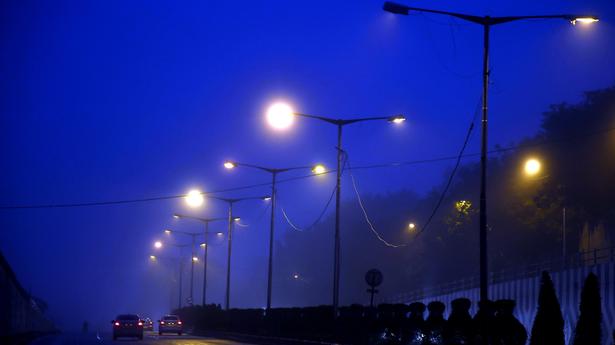
5G cells to piggyback on poles, hoardings
To expedite the roll out of 5G, telecom operators in the country will leverage street furniture such as poles, advertisement hoardings and bus shelters for deploying low power base stations called ‘Small Cells’ that will help bring the network closer to the consumers.
“Small Cells are needed for deploying 5G as opposed to earlier generations such as 4G, because of the frequency. The higher the frequency, the lower the wavelength, which means that the distance they travel is less,” S.P. Kochhar, Director General at Cellular Operators Association of India, said.
He added that for higher frequencies in the range of 3.3-3.6 GHz, which are expected to be used for offering 5G services, the waves will travel around 100-150 metres. At present, telecom towers, which are about 30 meters high, are placed at a distance of about 5 km apart.
The Telecom Regulatory Authority of India (TRAI) has also issued a consultation paper on the Use of street furniture for small cell and aerial fiber deployment, wherein it states that Small Cells will play a critical role in success of 5G as these are needed to exploit features of 5G such as low latency (minimal delay times), ultra-high speeds, and massive connection densities.
Small Cells are low-powered radio access nodes or base stations that have a coverage range from a few metres to a few hundred metres. They are portable, easy to deploy and help provide localised coverage. As per the TRAI paper, Small Cells provide coverage for very short distances and therefore they are installed in a large number – even more than 200 per sq. km – for good geographical coverage to provide highly reliable and high-capacity broadband.
Mr. Kochhar added that lower height (6-7 metres) poles are sufficient to install Small Cells, and a good ecosystem of such poles already exists in the form of street lights, electricity and traffic poles. “We expect to cover about 100-metre radius from each pole for the coverage to be adequate,” he said.
Leveraging existing street infrastructure will also save the hassle and investments needed for erecting new roadside poles, especially in highly populated areas.
Most countries are in the process of studying and initiating Small Cell architecture for 5G rollouts, TRAI notes. It is estimated that globally 1.56 million private 5G Small Cells will be deployed by 2027.
The Department of Telecom last week also notified the amended Right of Way (RoW) Rules, which pave the way for deployment of 5G Small Cells on existing street infrastructure, and expects these reforms to enable launch of 5G services in the country by October 2022.
The amendments include rationalisation of charges, introduction of a single window clearance system and doing away with the need for consent from a government authority for installing infrastructure over private property.
To facilitate faster 5G roll-out, RoW application procedures for Small Cells have now been simplified and telecom licensees will be able to use street infrastructure to deploy telecom equipment at a cost of ₹150/annum in rural areas and ₹300/annum in urban areas.
As per the amended rules, telecom licensees can enter into agreement with private property owners and will not require any permission from any government authority for installing telecom infrastructure such as towers, poles or optical fibre.
Additionally, no administrative fee shall be charged by the Central government for the establishment of poles on land owned/controlled by it. For State/UTs, this fee will be limited to ₹1,000 per pole. The fee for laying overground optical fibre shall be limited to ₹1,000/ km.
Stay connected with us on social media platform for instant update click here to join our Twitter, & Facebook
We are now on Telegram. Click here to join our channel (@TechiUpdate) and stay updated with the latest Technology headlines.
For all the latest Education News Click Here
For the latest news and updates, follow us on Google News.

